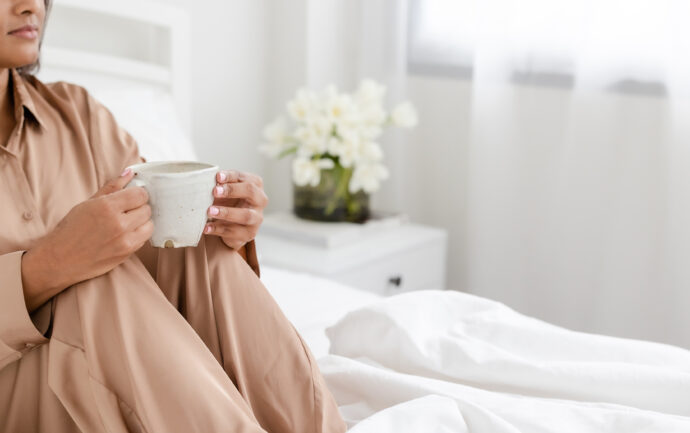Dr. Nina Savelle-Rocklin
10 Powerful Ways to Stop Hating Your Body

Table of Contents
- 1. Hidden Conflicts That Sabotage Change
- 2. Childhood Messages That Shape Body Image
- 3. Healing Old Wounds That Live in the Body
- 4. When Emotions Feel Too Heavy
- 5. The Triggers Behind Negative Body Thoughts
- 6. Coping Strategies That Backfire
- 7. Separating Self-Worth from Appearance
- 8. How Relationships Influence Body Image
- 9. Challenging Beliefs That Keep You Stuck
- 10. Practicing Kindness Toward Yourself
- Conclusion: Take the First Step Today
- Frequently Asked Questions
You have already taken the first bold step toward loving yourself more: you want to stop hating your body. That choice alone is a sign of courage. But where do you begin?
The path to acceptance does not come from dieting harder, exercising more, or trying to change your appearance. It begins by changing how you see yourself, challenging long-held beliefs, and treating your body with the respect and kindness it deserves.
When you stop hating your body, you open the door to living more fully, without food or appearance defining your worth. Here are ten ways to stop hating your body and start on a path to acceptance, healing, and peace with yourself. These strategies go beyond surface-level advice and address the psychological and emotional roots of body dissatisfaction.
1. Hidden Conflicts That Sabotage Change
Sometimes the reasons we hate our bodies are not obvious. They show up symbolically in dreams, behaviors, or patterns of self-sabotage. Bella had a recurring nightmare about being offered poisonous dates. She compared it to a scene from the movie Raiders of the Lost Ark, where a monkey dies after eating bad dates.
In her waking life, Bella longed desperately for a relationship but believed she had to lose weight before anyone would love her. Yet every time she approached her goal weight, she sabotaged herself and gained back the pounds she had lost.
Her dream revealed an unconscious conflict: part of her craved love while another part feared being “poisoned” by intimacy. By keeping herself unhappy with her body, she avoided dating and protected herself from vulnerability. Dating was symbolized by the food dates in the dream.
Once Bella understood this conflict, she challenged the idea that intimacy was dangerous and began dating without making her body the condition for love. Like Bella, when you explore what lies beneath the surface, you often discover that what feels like body hatred is really about something deeper.
2. Childhood Messages That Shape Body Image
Body hatred often begins in childhood. Kaitlyn grew up in a family where everyone was tall and thin, while she was short and muscular. Nobody criticized her directly, but her family often made harsh remarks about other people’s appearances. Kaitlyn absorbed those comments, internalizing the belief that her body was wrong.
For years, she saw only flaws when she looked in the mirror. Only when she reflected on her early experiences did she recognize that these ideas about her body had been learned. She realized her body was not defective, only different.
Nobody is born hating their body. Negative beliefs about our bodies are learned, and anything learned can be unlearned.
3. Healing Old Wounds That Live in the Body
For some people, body hatred is tied to unresolved pain from the past. Robyn grew up in an emotionally abusive household. She sought comfort in food and eventually her weight became a shield, protecting her from closeness that might hurt her again.
For years, she sabotaged her efforts to lose weight because on some level she believed her body was keeping her safe. In therapy, Robyn realized her body had never been the enemy. It had been her protector. When she learned to trust supportive people and build healthy relationships, she no longer needed her body as armor. She stopped eating for comfort and was able to feel safe in connection with others.
When you stop hating your body and instead honor how it has helped you survive, true healing becomes possible.
4. When Emotions Feel Too Heavy
Sometimes hating your body is really about hating how you feel. Emma often described herself as “too much” and thought she was too anxious, too loud, too emotional. Instead of facing those feelings, she displaced them onto her body. She viewed herself as too big, unconsciously believing that if her body were smaller, her emotions would shrink too.
Focusing on her body distracted her from the weight of her emotions. But when Emma began to acknowledge and process her feelings, she realized her body was never the problem. The real struggle was her discomfort with strong emotions.
When you stop hating your body and start making room for your emotions, you often find that the weight you have been trying to lose is not physical at all.
5. The Triggers Behind Negative Body Thoughts
Noticing when you feel the worst about your body is key. Lynn discovered that whenever she was upset with someone, she attacked herself instead.
After her boss dismissed her ideas in a meeting, Lynn did not think, “That was unfair.” Instead, she looked in the mirror and told herself she was unattractive and overweight. When a friend canceled plans, she did not acknowledge her disappointment but instead criticized her appearance.
Attacking her body was easier than facing the painful truth that her boss overlooked her or her friend let her down. When you stop hating your body and identify these triggers, you stop deflecting feelings onto yourself and start addressing what is really going on.
6. Coping Strategies That Backfire
Many people turn to food to cope with difficult emotions. At first it may feel like relief, but afterward comes shame and self-criticism, which in turn lead to eating for comfort, and the cycle continues.
Emotional eating is not about physical hunger. It is about escaping pain. Ironically, dieting or even mindfulness can make the problem worse because they focus on control rather than compassion. The most effective strategy is to treat yourself the way you would treat a friend, with kindness, patience, and understanding.
When you stop hating your body and instead comfort yourself with words rather than food, you begin to build real resilience.
7. Separating Self-Worth from Appearance
One of the most damaging beliefs that fuels body hatred is the idea that your worth depends on how you look. If the scale goes down, you feel proud; if it goes up, you feel ashamed. This rollercoaster of self-esteem keeps you trapped in body hatred, because your value feels conditional.
Real freedom comes when you separate self-worth from appearance. You are not your weight, your clothing size, or the reflection in the mirror. Your worth comes from who you are, so celebrate your kindness, creativity, resilience, humor, intelligence, and spirit.
Think of the people you admire most. Chances are it’s not because of how they look, but because of how they make you feel, what they contribute, and who they are at their core. The same is true for you.
When you stop hating your body and start defining yourself by your character and not your appearance, you create a foundation of self-respect that no number on the scale can shake.
8. How Relationships Influence Body Image
Relationships shape how we see ourselves. If the people around us constantly criticize their own bodies, we may start to do the same. If loved ones body-shame us, we internalize those judgments.
Supportive friends and family members can build confidence, while critical ones can breed insecurity. Reflecting on your relationships helps you see whether your body hatred truly belongs to you or whether it is something you absorbed from others. Surround yourself with people who respect and appreciate you as you are.
9. Challenging Beliefs That Keep You Stuck
Negative beliefs about our bodies often come from culture, family, or past experiences. These beliefs can feel like facts but they are not.
To stop hating your body, start by writing down the critical thoughts you carry:
“I am not thin enough”
“I will never be attractive”
“My body is wrong”
Ask yourself where these beliefs came from. Are they really true? Or are they based on unrealistic standards and external pressure? When you question and replace those beliefs with kinder ones, you shift from self-rejection to self-acceptance.
10. Practicing Kindness Toward Yourself
The most powerful way to stop hating your body is to practice kindness. This means treating yourself the way you would treat a good friend, with compassion instead of criticism, encouragement instead of judgment.
It also means caring for your physical health through rest, nourishment, and movement, not as punishment but as acts of respect. It means recognizing that your worth is not tied to appearance but to qualities like resilience, creativity, intelligence, and strength.
When you practice kindness toward yourself, you stop fighting your body and start appreciating it for all it does for you.
Conclusion: Take the First Step Today
Stopping body hatred is not about achieving a certain size or shape. It is about changing the way you relate to yourself. The stories of Bella, Kaitlyn, Emma, Lynn, Robyn, Marianne, and Tom all show that body hatred is never about the body itself. It is about fears, emotions, relationships, and beliefs that get displaced onto our physical selves.
When you stop hating your body and start listening to its messages, you gain the freedom to live more fully, without shame weighing you down. Choose one step today, whether it is noticing a trigger, expressing a hidden feeling, or practicing kindness, and begin the process of transforming your relationship with yourself and your body.
Frequently Asked Questions
What if I can’t stop negative thoughts about my body?
It’s normal to have negative thoughts, but when they dominate, they damage your self-esteem. Therapy can help you shift toward compassion and acceptance.
How can I love myself when others criticize my appearance?
Other people’s opinions don’t define your worth. Focus on what you appreciate about yourself and surround yourself with supportive people who uplift you.
Can I stop hating my body if I’ve always struggled with body image?
Yes. Body hatred is learned, and it can be unlearned. With patience, self-reflection, and consistent practice, you can build a healthier self-image.
What’s the difference between self-love and vanity?
Self-love is about respect and care for yourself, while vanity is an excessive focus on appearance. Self-love is about inner worth, not outside validation.
How does self-love impact overall well-being?
Self-love improves mental health, resilience, and life satisfaction. When you stop hating your body and practice acceptance, you feel freer, happier, and more at peace.
Sick of obsessing about every bite?
GET THE CURE
The Binge Cure Book!
Enter “CURE” to receive a 20% discount.
No, I don’t want access to this terrific resource to help me overcome binge eating.
The Author

Dr. Nina Savelle-Rocklin is a renowned author and podcast host and one of the nation’s leading psychoanalysts known for the psychology of eating. Her signature message of, “It’s not what you’re eating, it’s what’s eating ‘at’ you” has resonated with hundreds of thousands of listeners from around the globe in 40 countries. As founder of The Binge Cure Method, she guides emotional eaters to create lasting food freedom so they can take back control of their lives and feel good in their bodies.
Related Blogs





















